Bhilar Plots
Château de La Tour
Clos Vougeot Vieilles Vignes Grand Cru Pinot Noir 2016
No. 3 in the Chambolle Musigny, Vougeot, and Flagey Echezeaux Grand Cru bracket. Tasted blind. Complete, well balanced, indulgent. Some peppery notes....Clos de Vougeot? Minerally, not much ripe fruit here, Hoisin. Those were my off the cuff notes at the time. I have always struggled with the fact that ALL of Clos Vougeot is classified as Grand Cru. If you have ever visited you will know that the plots on the lower flat near the highway are not of GC standard whereas the upper plots near the Chateau over the road from Musigny have no trouble reaching Grand Cru standard. — 6 years ago
Château Coupe Roses
Les Plots Minervois Red Rhône Blend 2017
2017, AOC Minervois, vin puissant et agréable, bu à Gratens — 6 years ago
Bodegas Bhilar
Rioja Viura Grenache Blanc
2017 vintage -- honey, crisp, apricot — 7 years ago
Jacques Selosse
V.O. Extra Brut Blanc de Blancs Grand Cru Champagne Chardonnay
V.O. is my kind of Selosse, better ground material than Initiale, the oxidation profile has changed in his wine, thanx to Guillaume Selosse. A great expression of Chardonnay from different plots. — 7 years ago
Krug
Brut Rosé Champagne Blend
There are certain occasions that call for Krug Rosé. So, HBTM! The bottle was corked in the summer of 2014. It’s a blend of 45 reserve wines with the oldest being from 2007 and the youngest 2002. This is why I think Champagne Makers are some of the most talented people making wine. They are constantly blending up to 100 plus wines to bring that bottle to bottle and year to year branded flavor of consistency. On the nose; red & pink spring flowers, cherries, strawberries, watermelon, black cherry, black raspberries, notes of blood orange citrus, baked bread, soft volcanic mineral and elegant chalkiness. The palate is always ridiculously delicate. Micro bubbles, silky rich texture with beautiful soft acidity. The palate fruits are similar to the nose; rich & ripe cherries, strawberries watermelon, black cherry, black raspberries, notes of blood orange citrus with hints of marmalade. Red & pink spring flowers, baguette crust, soft powdery minerals that give the palate a slight sting and super powdery chalkiness done just right. The finish is beautifully rich, textured, revealing itself in layers and lasts minutes. Photos of; Founder Joseph Krug, House of Krug, Winemaker Eric Lebel, Krug’s Clos du Mesnil, a small plot of 1.85 hectares of Chardonnay...one of the world’s greatest vineyards and their salon tasting room. Producer history & notes...Krug was founded by Joseph Krug in 1853. They are based in Reims, the main city in France’s Champagne region. It is one of the famous Champagne houses that formed part of the Grande Marques. Today the house is majority owned by the multinational conglomerate LVMH, which owns Moët Hennessy, Louis Vuitton S.A. and who’s wine producer portfolio includes other well known wine brands such as; Moët & Chandon, Veuve Clicquot, Château d'Yquem, Ruinart & Cheval Blanc, Dom Perignon and many others. Despite LVMH's majority ownership, the family is still actively involved in all the key decisions of the house but does not manage the day-to-day operations. Joseph Krug was born Johann-Joseph Krug, a butcher’s son, in Mainz, on the Rhine in 1800 when the city was part of the Napoleonic Empire. Having dispensed with the name Johann, he left Mainz in 1824 and in 1834 moved on to Paris. Germans were in demand in France as accountants and bookkeepers. So, Joseph joined Champagne Jacquesson in Châlons-sur-Marne. He spent eight years with Jacquesson. His work took him beyond accountancy. He went around Europe testing the market and assessing criticism from wine sellers and customers. He learned about composition and taste so that by 1840 he already seemed to have been blending Champagne for at least one other house. In 1841, he married Emma-Anne Jaunay. The daughter of a French hotelier based in London’s Leicester Square. The following year their son Paul Krug was born. In 1842 he moved to Reims and following a year later, Krug et Cie was founded with his partner, Hyppolite de Vivès. Joseph was fluent in French, English and German and even spoke some Russian, putting the company in position to exploit key overseas markets. Joseph died in 1866 and was succeeded by his son Paul Krug, who had been trained by his father to takeover. Joseph under the supervision of Paul, Krug was established as a Grande Marque. By the 1880s the prestige of Krug was acknowledged in the United Kingdom and became the primary overseas market for Champagne. In 1866, the House moved into Rue Coquebert, in Reims as it remains. After Paul’s death in 1910, he was succeeded by his son, Joseph Krug II. However, during World War I Joseph II was taken prisoner and his wife Jeanne played a key role in the House at a time when the Western Front divided the region between the Allies and the Germans. After the war, Joseph II’s slow recovery led to his nephew Jean Seydoux becoming joint manager in 1924. In that decade, the Krug 1926 and 1928 vintages were created, which have been considered by critics to be amongst the greatest Champagnes. Lawyer and wine writer Maurice Healey declared “Krug” the king of all Champagnes. Further, “that the 1928 Krug was the best wine made in the present century.” By the mid-1930s, Paul Krug II, the son of Joseph II, was active in the business and would become head of the House from 1959 to 1977. His father died in 1967, by which time he was, according to Patrick Forbes, “one of the most popular and respected figures in the Champagne district.” In 1962 Henri Krug, the son of Paul II, joined the management, as did his brother Remi three years later. Their arrival was followed by a series of innovations, including extensions in the range of Champagnes. In 1979, for the first time, a graduate winemaker joined the House. In January 1999, the House became part of LVMH and by 2007, the brothers, while remaining on the tasting committee, had stepped down from day-to-day responsibilities. In 2009 Olivier Krug, the son of Henri, became House Director. At harvest, Krug grapes are pressed close to their plots with the first juice kept for 24 hours in a vat prepared for the fermentation stage. The pressing from each plot is vinified separately. A pressing contains 4,000 kilos of grapes and yields 20.5 hectolitres of first juice (cuvée), which is poured into twelve oak casks chosen at random. Once fermentation is complete, the eleventh and twelfth casks are used to top up the other ten casks in order to protect the new wines from oxidation. For fifteen days, each cask is topped up with wine from the same plot. Krug uses small 205 liter oak casks tailor-made from trees that are more than two centuries old in the forests of Hautes Futaies in Central France. The average age of Krug oak casks is 20 years. They are retired after approximately 40 years of use. The wines remain in the casks for several weeks. During this period, clarification occurs naturally from the cool temperature of the cellar given the coming winter, as does a micro-oxygenation process from the use of natural containers, making the wine more resistant to oxygen over time. Finally, between December and January, the wine is drawn off into small stainless-steel vats. From here, depending on the decisions of Krug’s tasting committee, the wines will either contribute to that year’s assemblage or be stored in steel vats in the House’s library of 150 reserve wines to be used in the blend of a future Krug Grande Cuvée and or Krug Rosé. — 8 years ago
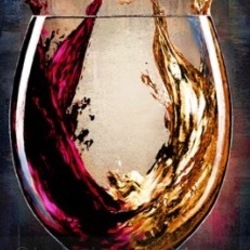

Vina Machali
Cabernet Sauvignon 2014
Had it with the winemaker: a vehement and honest French ex-pat who sources grapes from a couple of plots in the much-lauded Alto Cachapoal. Without touching the acidity or manipulating the alcohol, Machalí is elegant and poised, having precise aromas and complexity, but miles away from that über-common chocolate. — 10 years ago
Domaine Porte Rouge
Châteauneuf-du-Pape Red Rhone Blend 2012
Domaine Porte Rouge Châteauneuf-du-Pape 2012: a small 2,6Ha domaine, over 6 plots, 85% Grenache & 15% Syrah, it was one of the only 2012 that showed more than the others, most of the 2012 were sleeping. This wine is aged in old barrels, displaying fine tannins structure, a bit atypical from the others, floral and juicy, a generous wine. — 11 years ago
Casa Castillo (Julia Roche E Hijos)
El Molar Jumilla Monstrell 2018
El Molar is an unusual 100% Garnacha from a region known primarily for Monastrell/Mourvèdre. It is sourced from the estate’s youngest plots in El Molar, planted between 2004 and 2010 on sand and chalk soils. Aged in large foudres and barrels for 14 months. Light ruby color. Red fruit. Fresh — 5 years ago
Domaine Bizot
Échézeaux Grand Cru Pinot Noir 2017
Domaine Bizot lunch today hosted by their winemaker Thomas Berry. This is a producer who’s wines are virtually impossible to find. They have 9 plots with an average yearly production at 9000 btls. Whole cluster with some new oak, very small yields & small amounts of sulphur added. Their wines are lush & pure with no intervention showing purity of fruit, sweet spices along with floral notes. They are so delicious now you can drink them young but will reward long term cellaring. (Aka Liger Belair) — 6 years ago
Nicolas Rossignol
Volnay Pinot Noir 2012
Delicious well made, elegant, rich and balanced. This village has 1er Cru quality and given the issues with the hail and destruction of vineyards I will not be surprised if it does includes 1er Cru plots, nose is rich with a hint of wet forest, animalistic notes, mushrooms, cassis and black berries, medium body, round, smooth, rich, delicious finish. My score 89, drink to 2022 — 7 years ago
Domaine de Bonserine
La Garde Côte-Rôtie Syrah 2014
2014 vintage, from 2 plots, 100% new oak. Surprisingly smooth. — 8 years ago
E. Pira & Figli (Chiara Boschis)
Cuvee Chiara Barolo Nebbiolo 2002
Perhaps in general 2002 is considered a bad vintahe for Barolo, especially compared with the outstanding 99, 00, 01 before and 04, 05 etc. afterwards. However, Chiara Boschis succeeded in making a terrific effort with her 2002 "Cuvee Chiara", a blend of the best fruit of all her plots. this juice needed lots of air to show that it is still alive. Fully mature, jammy cooked red fruit, marzipan, perfumed autumn leaves and somewhat truffly. Bravissima, Chiara!! 2002 - don't disregard it at once, as it is part of the Barolo history and interesting to drink for every. At last this one was fun to drink! — 8 years ago
Tenuta San Guido
Guidalberto Toscana Cabernet Sauvignon Merlot 2015
60% Cabernet Sauvignon 40% Merlot
Vintage elevage can vary, but is mostly 6-8 year old French oak barrels, with a small percentage of new French oak. The team at Sasaacaia do not look at Guidalberto as a second wine, specific plots are destined for this wine from the 10-24 year old Cabernet Sauvignon vines. Merlot does not even make it into #Sassicaia. The nose is serious, with pronounced complexity and density, focused and showing varietal nuances. Excellent grip and structure, fleshier fruit notes turn darker with deeper cherry, red raspberry and cassis fruit, sweet blue and violet floral notes. A sweet core of ripe and velvety tannin, while juicy acidity amps up the the fruit presence, while adding freshness and spine. This is a smart buy almost every vintage and 2015 is no exception. — 8 years ago
Terras Gauda
Abadia de San Campio Rías Baixas Albariño 2013
The albariño grapes are harvested from higher-altitude vineyards plots at Goian (Argallo), slow ripening in cooler temperatures. Light straw yellow with aromas of white flesh fruits and citrus. On the palate this un-oaked wine is crisp with Apple, pear and white peach adding some lemon zest, clean and fresh. Bright acidity, this easy drinking wine finished with some tart fruit on a long ending. Very Nice! — 9 years ago
Clos Ste. Magdeleine
Cassis Blanc Marsanne Blend 2012
Low on the radar and I hope it stays that way as enjoyable as this wine is.
45% Marsanne, 30% Ugni Blanc, 20% Clairette, 5% Bourboulenc
From seaside vineyards, the plots lie within direct sight of the Mediterranean in some cases or are towered over by the palisade like cap Canaille which forms part of the coast in Cassis.
The aroma is of stone fruits, fresh white spring flowers, fennel spice, all accented salty sea air. The palate is juicy white peaches sprinkled with sea salt, with a touch of licorice like spice. Excellent acidity and body, with a refreshing and clean finish. #cassis #realprovence — 10 years ago


Château de Beaucastel
Hommage à Jacques Perrin Châteauneuf-du-Pape Red Rhone Blend 1998
These magnums of 1998 HJP did not have labels since it was from the Caves of Beaucastel. ~60 percent Mouvedre with the rest made up of Syrah and Grenache from the best plots at Beaucastel. — 10 years ago
Domaine Hubert Lignier
Vieilles Vignes Morey St. Denis 1er Cru Pinot Noir 2000
Loved pouring these alongside Laurent Lignier yesterday at #lapaulee Verticals. Always been a favorite domaine. The VV 1er comes from two 1er plots in MSD - one planted in 1950, the other in 1936. 00 was a stunner. Ethereal, but with a brooding, earthy power. — 11 years ago
Domaine Bachelet-Monnot
La Fussière Maranges 1er Cru Pinot Noir 2017
Beautifully aromatic Pinot Noir from Domaine Bachelet-Monnot in Dezizes-les-Maranges, southernmost commune of the Côte de Beaune in Burgundy, from several different plots on predominantly calcareous soils in La Fussière 1er Cru. Fresh, structured, precise. Candy (jelly beans or bubble gum?) and coffee liquor in nose. Redcurrant, lingonberries — 6 years ago
Bodega Comando G
El Hombre Bala Garnacha 2016
Pale ruby, very light Pinot-like Gredos Garnacha from 50-90 year old vines from various plots in Cadalso de los Vidrios, Cenicientos and Rozas de Puerto Real by Uvas Felices (a partnership of superstar winemakers Comando G and Vila Vinoteca). Bright red fruit & Candy. — 6 years ago
Viña Real (CVNE)
Gran Reserva Rioja Tempranillo Blend 2012
A blend of 95% Tempranillo & 5% Graciano, aged in new oak for 2 years and in bottle for 3 years before release. Ruby and Youthful, with aromas of black fruits and complex spice notes. From hand harvested grapes from better plots in Rioja Alavesa, the palate shows black and red berry fruits, some stewed cherry, with developing flavors of cacao, cedar and toasty leather notes. Smooth yet powerful tannins very well structured, balanced acidity, ending with a long finish of fruit almost a bit creamy. Outstanding and will only get better in the bottle! — 6 years ago
Prince Florent de Merode
Les Bressandes Corton Grand Cru Pinot Noir 2006
What a nose. Not what I expected from a Corton. Floral nose with a touch of wildness to it. Dark cherries and maybe vanilla. Spices... clove and nutmeg. Immediately thought Morey, but the extremely elegant mouth feel and sweetness on the palate made me think Chambolle. Bit of smoke in the end. One of the last few vintages before the plots were sold to DRC. — 7 years ago
Domaine du Comte Liger-Belair
Aux Cras Nuits St. Georges 1er Cru Pinot Noir 2012
Sandalwood, pencil shavings, dark cherries, toasty, and burdock root. Initially split between VR or NSG. Structure and minerality gave way to NSG. Opened up a bit but rather linear. Very interesting contrast to the Vosne Romanee Les Chaumes 2014 I recently tried. At least to me, this had the signature CLB characteristic nose, without betraying the terroir. The Les Chaumes had a more floral and pretty nose, but less structure versus the Aux Cras. The two plots are roughly 250 meters apart. That's terroir for you. — 8 years ago
Launois Père et Fils
Special Club Brut Blanc de Blancs Grand Cru Champagne Chardonnay
Everything a top cuvée blanc de blanc should be is here in this bottle. I have been spoiled tasting the great 2008 vintage and this might be the best I have had. From two plots planted in the early 50's in Mesnil, fermented in enamel lined iron. The chalky electricity of 2004 meet the clean richness of 2002 in this bottle that can be drunk now or saved for as long as you live! — 9 years ago
Brunelli
Rosso Di Montalcino Sangiovese 2015
Young and a bit closed, but dignified and serious nonetheless. 3/4 of a bottle per plant, this is a world class producer very committed to the health and upkeep of his small plots. A one man show from soil to bottle. Bold and big, with unripe and slightly sour black cherry mingling with gamey animal notes, and a kick of white pepper at the end. Very well balanced and integrated. — 9 years ago
René Bouvier
La Justice Gevrey-Chambertin Pinot Noir 2012
Said my 14-year-son as I decanted this wine and let him take a sniff: "It smells more than any other wine I ever smelled before!" The notes of red PN-typical fruits are really intense and interesting, and, on the one hand, the wine delivers hints of horse-stable and earth, and on the other hand, has a lovely sensual perfume; the mid-palate-dominated wine has soft tannins, a northern-Rhône-like "meat-savouriness", and a rather short finish that nevertheless reveals potential for developmemt. Some new oak is evident on the palate and alcohol seems higher than the restrained 13% indicated. The La Justice commune-appelation plots are located northeast of the Gevrey-Ch. village. Will try again in 2018 (and then I will remember to play the same recording of The New World Symphony as today; music & wine is as important as wine & food to me). Had with gruyere and spanish ham cut from the hiney of a pata negra acorn-fed pig. — 10 years ago
Crossroads
Milestone Series Syrah 2011
Great fruit and savoury, not hot, stainless steel. Mixture of four plots — 10 years ago
Essence de Dourthe
Bordeaux Supérieur 2008
Essence is an interesting idea from the Vins et Vignobles Dourthe company in Bordeaux, which is widely known in the UK and Europe, but they are recently placing their focus on the U.S. market. It is a blend from the best plots of some of their well-known chateaux. Only 500 cases made. This 2008 was simply dense, dark, and lovely. Espresso, licorice, intense graceful fruit & long finish. — 11 years ago





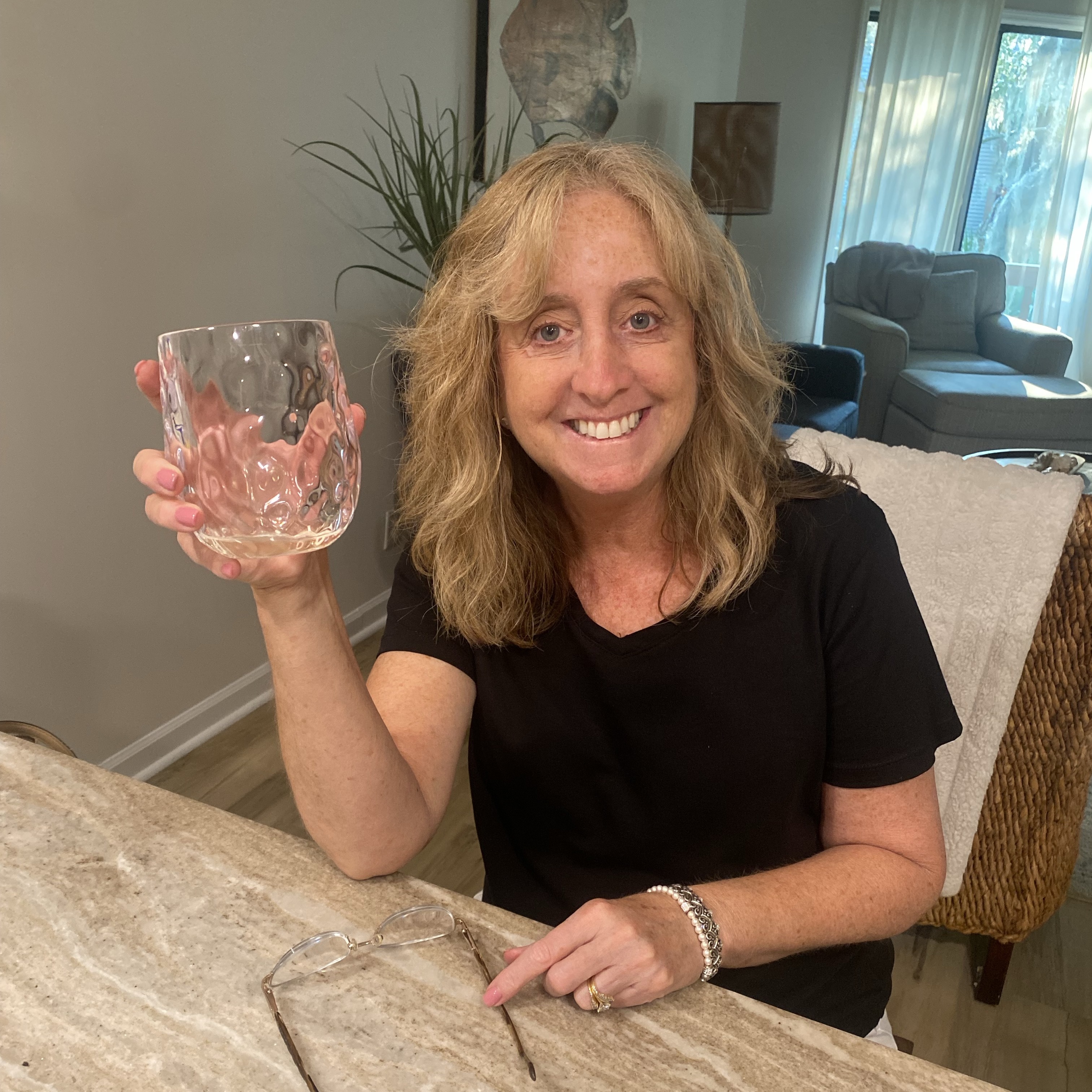

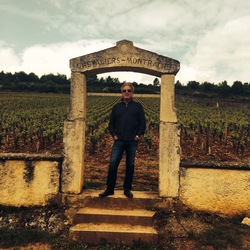


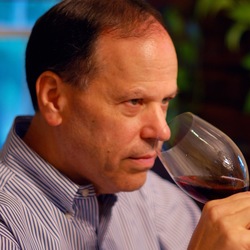


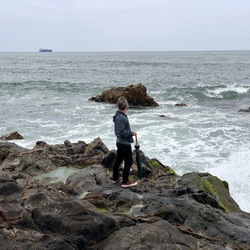


Alder Yarrow
Wine Blogger Vinography
Warning! Wunderkind wine! Chris and Suzaan continue to do great things with the little plots of heritage vines they find in the nooks and crannies around Walker Bay. Gorgeous lemon curd, peach and poached pear flavors have a stark mineral tone and a hint of toasty butterscotch in the finish. — 5 years ago